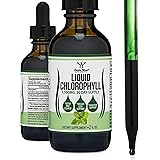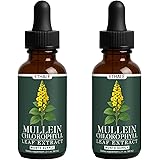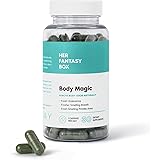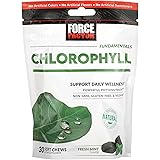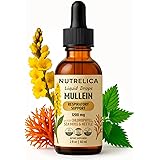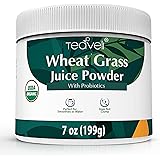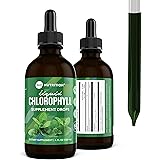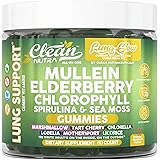Chronic stress has become an epidemic, silently eroding our well-being. It impacts various physiological systems. Our bodies are equipped with a sophisticated stress response system. This system, while vital, can become overtaxed. Prolonged activation leads to significant health challenges. Understanding and managing this response is crucial for health. This content expands upon strategies from the accompanying video, focusing on a comprehensive cortisol detox plan.
The video above details personal steps for reducing stress. It outlines how to lower cortisol levels naturally. Elevated cortisol manifests in specific ways. Recognizable signs include “cortisol belly” and “cortisol face.” Addressing these symptoms requires a holistic approach. This article delves deeper into the physiological mechanisms and practical applications.
Decoding Cortisol’s Function and Dysregulation
Cortisol is a glucocorticoid hormone. It is produced by the adrenal glands. This hormone mediates the “fight or flight” response. It provides rapid energy and focus. Cortisol is essential for survival. However, chronic elevation creates systemic issues.
Firstly, persistently high cortisol levels lead to weight gain. This is often centralized as visceral fat. Visceral fat accumulates around internal organs. Such accumulation increases risks for cardiovascular disease. It also heightens type 2 diabetes risk. Secondly, “cortisol face” (or “moon face”) may develop. This involves facial puffiness, acne, and skin thinning. Dark circles under the eyes also become pronounced. Thirdly, the immune system weakens. Individuals become more susceptible to illness. Fourthly, sleep quality deteriorates, causing fatigue. Fifthly, anxiety and depression often increase. Sixthly, cognitive functions like memory are impaired. Lastly, muscle breakdown and bone damage can occur. Blood pressure may rise, further increasing heart disease risk. This cascade of effects underscores the need for effective cortisol management.
Unpacking the Etiology of Elevated Cortisol
Numerous factors contribute to elevated cortisol levels. Identifying these triggers is the initial step toward mitigation. These causes often overlap, creating a complex web.
- **Chronic Stress:** Emotional, mental, or physical stressors are primary culprits. Work pressure, personal issues, and trauma activate the hypothalamic-pituitary-adrenal (HPA) axis. This sustained activation drives cortisol production. The body remains in a heightened state of alert.
- **Sleep Deprivation:** Inadequate or poor-quality sleep disrupts circadian rhythms. Cortisol regulation is consequently impaired. Levels remain high throughout the day. This creates a vicious cycle of stress and poor sleep.
- **Suboptimal Diet:** Diets high in refined sugars, excessive caffeine, or ultra-processed foods provoke cortisol spikes. These foods contribute to systemic inflammation. They also destabilize blood glucose.
- **Overtraining Syndrome:** Intense physical activity without sufficient recovery elevates cortisol. The body perceives extreme exercise as a stressor. This can lead to a catabolic state.
- **Underlying Health Conditions:** Conditions like Cushing’s syndrome directly cause high cortisol. Depression and anxiety disorders are also linked. Chronic inflammation or autoimmune conditions also contribute.
A diagnostic assessment is often warranted. Cortisol levels can be measured. Tests include blood, saliva, or urine analysis. A DHEA cortisol ratio test provides additional insights. These assessments help confirm dysregulation. They guide personalized intervention strategies.
The Cortisol Reduction Plan: A Six-Step Framework
Effectively reducing cortisol involves a multi-faceted approach. The video outlines a strategic plan. This plan focuses on lifestyle and dietary adjustments. It prioritizes holistic well-being.
- **Dietary Optimization:** Emphasize whole, unprocessed foods. Minimize refined sugars, excessive caffeine, and alcohol.
- **Targeted Supplementation:** Utilize specific supplements known to support adrenal function.
- **Stress Management Techniques:** Incorporate practical strategies to calm the nervous system.
- **Sleep Prioritization:** Aim for 7 to 9 hours of high-quality, restorative sleep.
- **Mindful Movement:** Integrate mobility work and yoga to balance resistance training and cardio.
- **Social Connection and Joy:** Actively seek out laughter, socialization, and time in nature.
Each component plays a vital role. Synergistic effects lead to sustained cortisol reduction. This comprehensive strategy addresses underlying causes. It promotes overall resilience.
1. Dietary Interventions for Adrenal Support
A “cortisol detox diet” forms the cornerstone of this plan. It is a strategic approach. It balances cortisol levels. This diet supports adrenal health. It calms the nervous system. Ultimately, it enhances sleep and overall well-being.
Key Dietary Components and Restrictions:
Firstly, focus on nutrient-dense whole foods. These provide essential micronutrients. Lean proteins like beef, chicken, fish, and eggs are crucial. Healthy fats, such as avocado and nuts, support hormonal balance. High-fiber foods, including leafy greens and berries, aid gut health.
Secondly, limit foods and drinks that provoke cortisol spikes. Processed sugars cause rapid glucose fluctuations. Mindful reduction, not necessarily complete elimination, is key. Excessive caffeine over-stimulates the adrenal glands. The video’s host maintains roughly 300 mg daily. This includes coffee, green tea, and a pre-workout supplement. Alcohol is a significant stressor. It disrupts sleep and liver function. Eliminating alcohol for extended periods yields benefits. The host reports over six months without alcohol. Thirdly, prioritize optimal hydration. Consume at least half your body weight in ounces of water daily. Adding electrolytes is beneficial. Herbal teas like chamomile, lemon balm, or passionflower promote relaxation. Two cups per day are recommended.
The Adrenal Cocktail: A Supportive Elixir
The “cortisol cocktail,” also known as an adrenal cocktail, has gained popularity. It claims to help reduce cortisol levels. This recipe includes ingredients promoting relaxation. It also supports adrenal health. Key components are high in Vitamin C. Electrolytes like sodium, potassium, and magnesium are vital. An optional addition is collagen protein.
The standard recipe combines half a cup of orange juice for Vitamin C. Half a cup of coconut water provides potassium. A quarter teaspoon of sea salt supplies sodium. One serving of collagen can be added. For enhanced electrolyte support, an eighth teaspoon of potassium powder is included. An eighth teaspoon of magnesium powder also contributes. These ingredients are mixed and consumed. This cocktail is often suggested mid-morning or afternoon. It can be taken when energy dips. While direct evidence for cortisol reduction is emerging, ingredients support overall health. Many individuals report feeling calmer and less stressed. This suggests a beneficial impact on the nervous system.
2. Targeted Supplementation Strategies
Dietary changes are foundational. Specific supplements can provide additional support. These compounds have demonstrated efficacy in modulating cortisol. They enhance the body’s stress response.
Firstly, fish oil supplements are beneficial. Studies indicate fish oil reduces cortisol levels. Its anti-inflammatory omega-3 fatty acids are key. These fatty acids regulate the stress response. A daily dose of 1,000 to 3,000 milligrams of combined EPA and DHA is suggested. This contributes to neuroinflammation reduction. It also supports cellular membrane integrity.
Secondly, Ashwagandha (Withania somnifera) is a prominent adaptogen. It is highly researched for stress and cortisol reduction. Adaptogens help the body adapt to stressors. Ashwagandha specifically moderates HPA axis activity. A dosage of 300 to 600 milligrams per day is typical. Ensure it is a standardized extract for potency.
Thirdly, magnesium plays a crucial role. Magnesium deficiency is linked to higher cortisol levels. This mineral possesses a calming effect on the body. It supports over 300 enzymatic reactions. Magnesium L-Threonate is preferred for brain bioavailability. Its dosage is 150 to 300 milligrams daily. Magnesium Glycinate is another excellent choice. It offers good absorption and minimal GI side effects. A typical dosage is 200 to 400 milligrams per day.
Fourthly, specialized formulations can be effective. Products like Cured Serenity Gummies are mentioned. These combine several synergistic compounds. One gummy contains 150 milligrams of L-Theanine. L-Theanine enhances GABA activity. This neurotransmitter promotes relaxation. It helps lower cortisol. The gummies also include 20 milligrams of Reishi mushroom. Reishi is another adaptogenic herb. It supports immune and nervous system health. Fifteen milligrams of full-spectrum CBD is also present. CBD modulates the endocannabinoid system. This system influences stress response. A small dose of Ashwagandha completes the blend. Such formulations can provide comprehensive stress support. The host credits these gummies for prolonged alcohol abstinence.
Lastly, aromatherapy can complement internal strategies. Lavender essential oil diffusers offer a soothing effect. Two to three drops in a diffuser are recommended. Lavender’s aroma impacts the limbic system. This reduces cortisol and promotes relaxation. This simple practice integrates sensory input. It fosters a calming environment.
3. Implementing Practical Stress Management Techniques
Beyond diet and supplements, active stress management is paramount. These techniques directly target the nervous system. They shift the body from “fight or flight” to “rest and digest.”
Somatic Yoga for Cortisol Reduction:
Somatic yoga is a mindful practice. It integrates slow movements, deep breathing, and body awareness. This practice activates the parasympathetic nervous system. It facilitates body relaxation. Over time, it demonstrably lowers cortisol levels. It enhances sleep quality. It boosts stress resilience. Implementing somatic yoga can be achieved through five steps:
- Begin with 10 to 15 minutes. Practice three to four times weekly. Gradually increase duration as comfort allows.
- Practice in the morning. This sets a calm tone for the day. Alternatively, use it in the evening. This aids in unwinding and improving sleep.
- Find a quiet, calm space. Ensure it is free of distractions. Use soft lighting. Consider ambient cortisol reduction music.
- Focus on slow, deep belly breathing. Breathe from your diaphragm. This technique calms the nervous system profoundly.
- Start with gentle poses. Examples include cat-cow, child’s pose, and reclining twists. Guided somatic yoga videos on YouTube offer excellent resources.
Cortisol Reduction Music and Frequencies:
Specific music frequencies influence brainwave states. These frequencies can lower stress and cortisol. Alpha waves (8-14 Hz) are associated with a relaxed, alert state. Theta waves (4-8 Hz) promote deep relaxation and meditation. These frequencies activate the parasympathetic nervous system. This helps reduce cortisol.
Searching for “cortisol reduction music” or “8 to 14 Hz” on platforms like YouTube yields results. Alpha frequencies enhance focus and productivity. They maintain a calm, peaceful state. Theta frequencies are ideal for meditation, deep breathing, or pre-sleep. They promote profound relaxation. Such music typically features slow tempos and soothing harmonies. Integrating this into daily routines creates a peaceful auditory environment.
4. Optimizing Sleep Architecture for Hormonal Balance
Prioritizing 7 to 9 hours of high-quality sleep is non-negotiable. Sleep profoundly impacts cortisol regulation. During sleep, the body repairs and regenerates. Cortisol levels naturally drop. Chronic sleep deprivation disrupts this rhythm. It leads to elevated daytime cortisol. Establishing a consistent sleep schedule is key. Create a calming bedtime routine. Ensure a dark, cool, and quiet sleep environment. Limiting screen time before bed is crucial. Blue light interferes with melatonin production. This can impair sleep onset and quality. Strategic napping can also offer benefits. However, it should not replace nocturnal sleep.
5. Strategic Physical Activity and Movement
Exercise is a potent stress reliever. However, the type and intensity matter. Overtraining can exacerbate cortisol issues. Incorporating more mobility and yoga balances vigorous workouts. Resistance training and cardio are important. They improve cardiovascular health and muscle mass. Yet, they need complementary practices. Yoga and mobility enhance flexibility. They improve body awareness. They reduce muscle tension. These practices also activate the parasympathetic system. This promotes recovery and reduces inflammatory markers. Walking in nature also provides significant benefits. It lowers perceived stress. It reduces cortisol levels. This creates a holistic fitness regimen. It supports hormonal equilibrium.
6. Cultivating Social Connection and Joy
Human connection is a fundamental need. Social interaction releases oxytocin. This hormone counteracts cortisol. Laughter is a powerful antidote to stress. It reduces stress hormones. It boosts endorphins. Spending time in nature also lowers cortisol. It improves mood. It enhances cognitive function. Actively scheduling social engagements is important. Prioritize activities that bring joy. Engage in hobbies. Foster meaningful relationships. These actions contribute significantly to mental well-being. They support a lower cortisol baseline. This aspect of the plan addresses the emotional and relational dimensions of stress.
Clinical Assessment and Interpretation of Cortisol Levels
Assessing cortisol levels provides objective data. Healthcare providers typically perform these tests. Common methods include blood, saliva, and urine tests. A DHEA cortisol ratio test offers a broader hormonal picture. These tests help identify chronic dysregulation.
Interpreting cortisol ranges requires understanding circadian rhythm. Cortisol levels are naturally highest in the morning. This helps with alertness. A normal morning blood test range is 10 to 20 micrograms per deciliter (µg/dL). Levels above 20 µg/dL are considered high. In the afternoon (4 to 6 p.m.), cortisol should decline. Normal afternoon ranges are 3 to 10 µg/dL. Levels exceeding 10 µg/dL are high. By nighttime, levels should drop significantly. A normal range is 1 to 5 µg/dL. Levels above 5 µg/dL at night are high. Elevated nighttime cortisol significantly interferes with sleep. It strongly suggests chronic stress or other health issues. Consulting a healthcare professional is crucial. They can accurately interpret results. They can guide appropriate interventions for a comprehensive cortisol detox.


